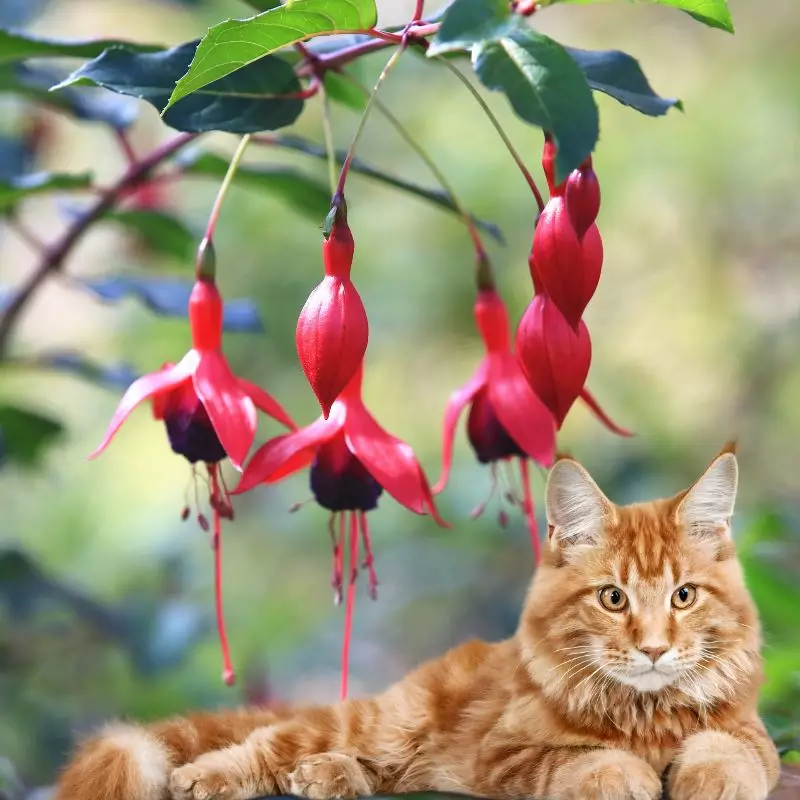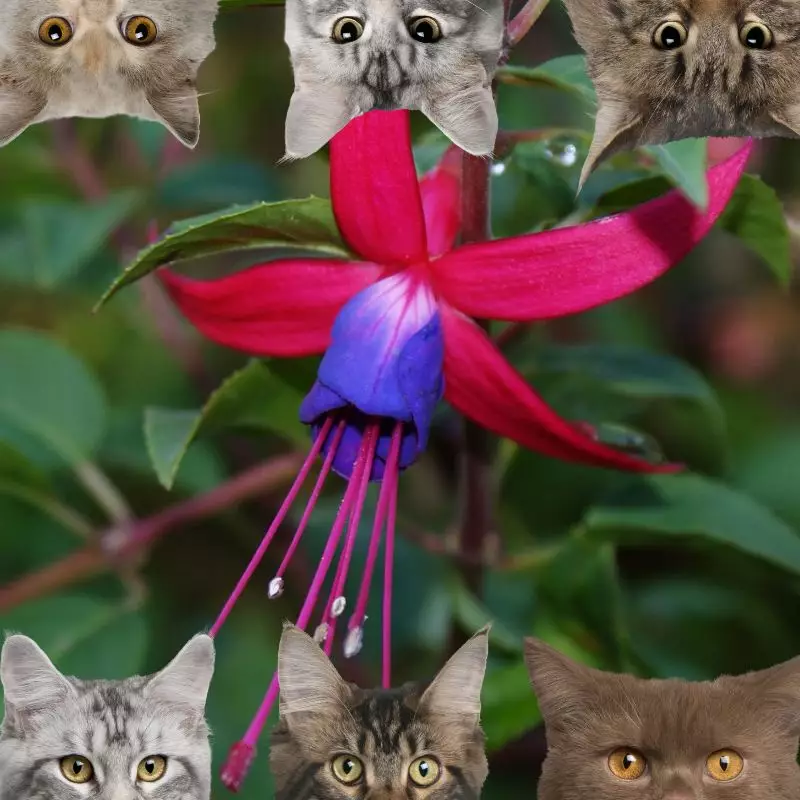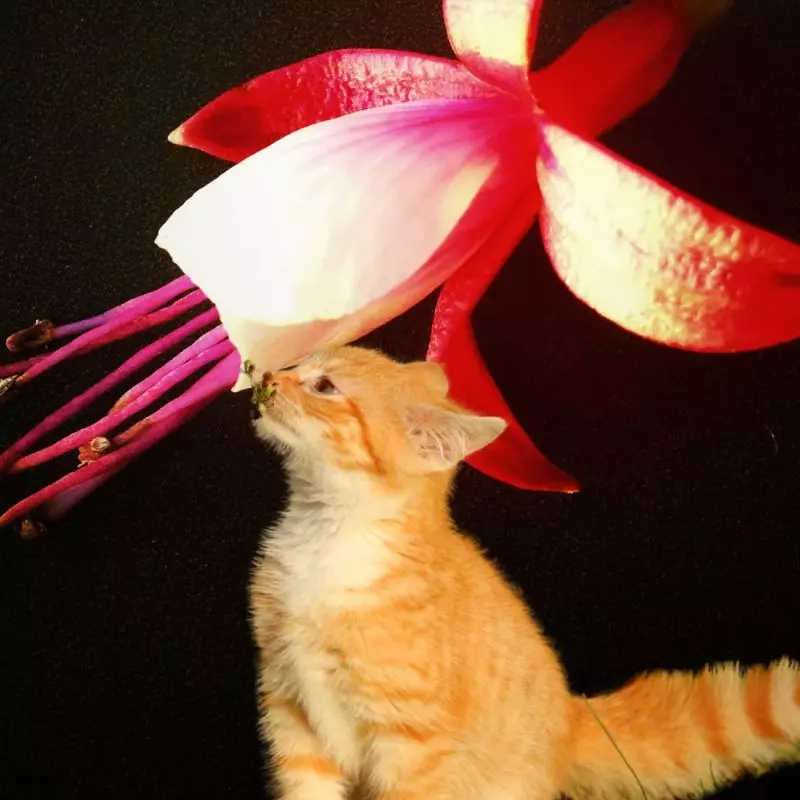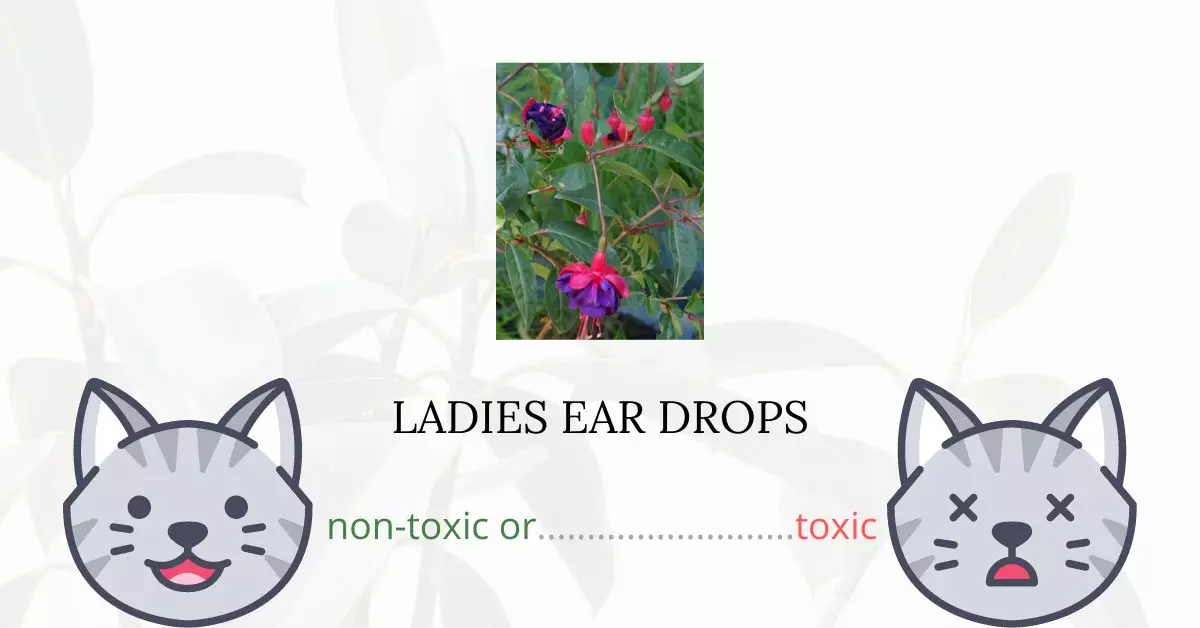Ladies Ear Drops are not toxic to cats. If you’ve cultivated these beautiful, exotic plants in your home or garden, rest assured that they pose no harm even if your feline companion shows interest in their leaves, flowers, or berries.
This article was meticulously crafted in collaboration with a team of experienced DVMs (doctors of veterinary medicine). Their invaluable insights and expertise ensure that we provide accurate and up-to-date information concerning the potential risks associated with various plants, particularly the Ladies Ear Drops in this context. Our findings are further validated by authoritative sources such as the ASPCA and PetMD, both of which recognize Ladies Ear Drops as nontoxic plants for cats.
Can Cats Eat Ladies Ear Drops?

There is no health danger associated with ladies ear drops for cats. She won’t suffer any harm if she eats the flower, leaf, or stem. Because the flowers and berries are so nutritious, cats can eat them.
If a cat decides to eat it, this plant not only provides lovely flowers but also a nice, wholesome meal. The pods that are left over after the flower blooms are actually edible berries. Antioxidants, Vitamin C, and other beneficial nutrients are abundant in the berries.
What are Ladies Ear Drops?

It is a shrub from the Onagraceae family that grows in forest edges and clearings, particularly in the deciduous/mixed evergreen forests of South America – Chile and Argentina. There are nearly 110 species of Ladies ear drops known. Common names include Hardy Fuchsia, Earring Flower, Fuchsia Angel Earrings, and Fuchsia. In cooler climates, where it can remain semi-evergreen, Ladies Ear Drops make an attractive hedge.
The petals and crown of the blooms protrude from a deep tube that opens into pointed petals.
For a long time, from late spring to late October, it blooms profusely. The flowers are heterosexual (they have female and male organs).
Keeping Cats Away From Ladies Ear Drops

Try covering the surface with a layer of large, heavy pebbles. It ought still to permit water to permeate through to the soil below as long as it is not too densely packed. It won’t feel like a litter box and won’t be as alluring.
If you like a more decorative appearance, you may also use sizable chunks of polished glass, rough pine cones, seashells, or shattered pottery.
Sometimes giving a leaf-chewing cat some of their own plants will divert them from your houseplants. You can maintain a pot of mint, cat grass (which is actually a mixture of oat or barley grass), or thyme instead of catnip, which is probably too adored. These are popular with cats and are completely secure to be occasionally chewed.
Plants to Avoid For Your Cats
If you are a cat owner and unsure if the plants growing in your yard are harmful to your cats, check out this list of toxic plants for cats. You can also check our list of non-toxic plants for cats.





